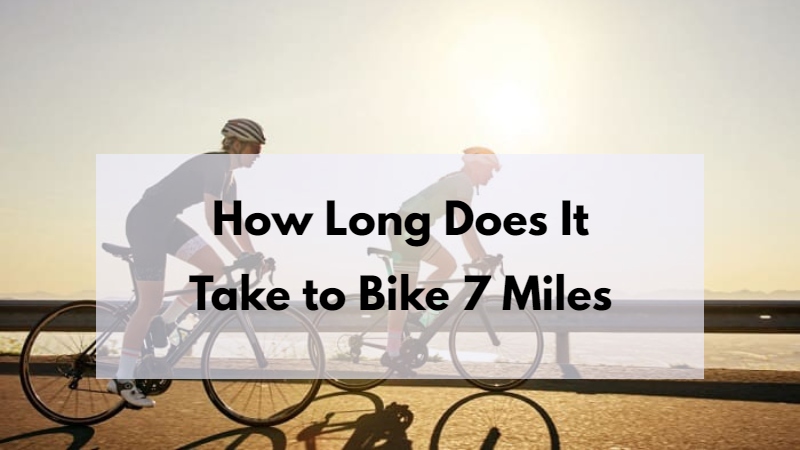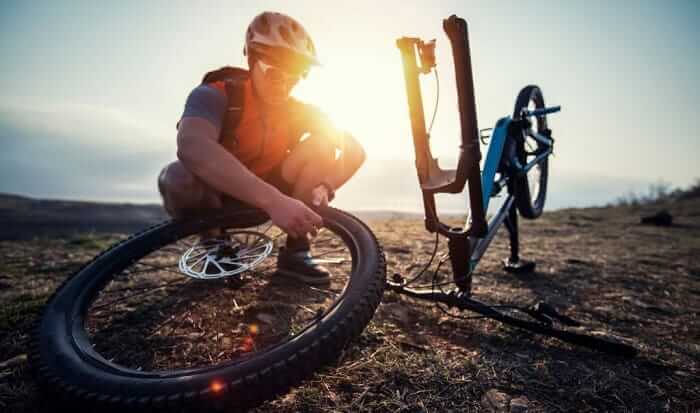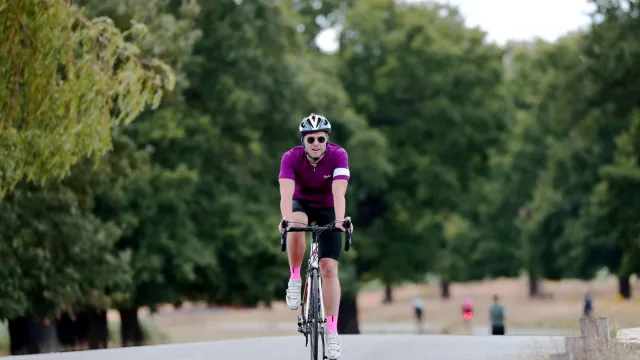Biking is a great way to get exercise, enjoy the outdoors, and reduce your carbon footprint. But how long does it take to bike 7 miles? The answer depends on a number of factors, including your fitness level, the terrain, and the traffic conditions.
In general, it takes most people between 30 and 45 minutes to bike 7 miles at a moderate pace. If you’re a beginner, you may want to start with a shorter distance and gradually work your way up to 7 miles. And if you’re biking in hilly terrain or heavy traffic, you may want to budget more time.
This blog post will take a comprehensive look at how long it takes to bike 7 miles. We’ll discuss all of the factors that can affect your cycling speed, and we’ll provide some tips for making your ride as efficient as possible.
Factors that Affect Your Cycling Speed
When it comes to determining how long it takes to bike 7 miles, several factors come into play. Understanding these elements can help you better estimate your own cycling time and make the necessary adjustments for a more efficient ride.
- Fitness Level: Your physical condition is a primary determinant of your cycling speed. More fit individuals can maintain a higher speed over longer distances. For beginners or those who haven’t cycled in a while, it might take a little longer to complete 7 miles. Regular training can significantly improve your stamina and cycling speed over time.
- Terrain: The type of terrain you’re biking on can greatly influence your speed. Flat terrains allow for a steadier and faster pace, while hilly terrains will likely slow you down, especially on the uphill sections. It’s important to factor in the terrain type when planning your ride.
- Traffic Conditions: Biking in an area with heavy traffic can slow you down. You’ll need to navigate through cars, stop at traffic lights, and be extra cautious, which inevitably reduces your average speed.
- Wind Conditions: Wind resistance can have a surprising impact on your cycling speed. A strong headwind will slow you down, making it more challenging to maintain a consistent speed. Conversely, a tailwind can give you an extra boost.
- Bike Type: The type of bike you use also influences how fast you can cover 7 miles. Road bikes, designed for speed and efficiency on paved surfaces, are typically faster than mountain bikes or hybrids.
- Tire Pressure: Properly inflated tires can make a significant difference in your cycling speed. Tires with the right amount of pressure reduce rolling resistance, allowing you to bike faster and with less effort.
Tips for Making Your Cycling Speed More Efficient
Improving your cycling efficiency is not just about pedaling harder; it’s about smarter cycling. Here are some tips to help you make the most out of every ride:
- Streamlined Riding Position: Adopt a position that reduces wind resistance. Keep your back straight, lower your head, and tuck your elbows in. This position helps in cutting through the air more efficiently, increasing your speed.
- Gear Usage: Knowing when to shift gears is super important. Use higher gears on flat surfaces or when going downhill to maintain momentum. Shift to lower gears for uphill climbs to reduce strain and maintain a steady cadence.
- Smooth Pedaling: Aim for a smooth and consistent pedaling motion. Jerky or inconsistent pedaling can waste energy and reduce your efficiency.
- Stay Hydrated: Dehydration can significantly impact your performance. Drink plenty of water before, during, and after your ride to maintain optimal energy levels.
- Healthy Diet: Your diet plays a vital role in your cycling performance. Eating balanced meals ensures that you have enough energy to sustain your biking efforts.
- Regular Maintenance: Keep your bike in good condition. Regularly check tire pressure, brakes, and gear function. A well-maintained bike reduces the effort needed to pedal and increases your overall efficiency.
How Long Does It Take to Bike 7 Miles for a Beginner?
For beginners, biking 7 miles might seem like a daunting task. However, with the right approach and gradual training, it’s definitely achievable. On average, a beginner might take about 45 minutes or more to bike this distance. This time can vary based on individual fitness levels and familiarity with cycling.
Here are some beginner-friendly tips:
- Start with Flat Routes: Initially, choose flat or slightly undulating routes. This will help you build endurance without the added challenge of steep hills.
- Take Breaks: Don’t hesitate to take short breaks during your ride. This will help you avoid overexertion and maintain a steady pace throughout.
- Gear Familiarity: Learn to use your gears effectively. Shifting gears can help you manage different terrains with less effort.
- Listen to Your Body: Pay attention to your body’s signals. If you feel excessive strain, slow down or take a break.
- Gradual Progression: Start with shorter distances and gradually increase your mileage as your stamina and confidence improve.
How Long Does It Take to Bike 7 Miles for a Seasoned Rider?
Seasoned cyclists, due to their experience and higher fitness levels, can usually cover 7 miles in 30 minutes or less, depending on the factors previously discussed. For these riders, the focus is often on improving speed and efficiency.
Tips for seasoned riders include:
- Optimal Bike Fit: Ensure your bike is properly fitted to your body. A bike that fits right helps in efficient power transfer and reduces the risk of injury.
- Clipless Pedals: Consider using clipless pedals. They allow for a more efficient pedal stroke by enabling power transfer on both the upstroke and downstroke.
- Regular Training: Incorporate regular training sessions into your routine, focusing on both endurance and speed.
- Nutrition and Hydration: Pay attention to your nutrition and hydration before, during, and after your ride to ensure optimal performance.
How Long Does It Take to Bike 7 Miles on a Hilly Course?
Biking on a hilly course is inherently more challenging and time-consuming than on a flat course. The time added depends on the hill’s steepness and the number of inclines on the route.
Here’s how to tackle hilly terrains:
- Gear Down Early: Shift to a lower gear before you start ascending. This makes it easier to maintain a steady cadence.
- Maintain High Cadence: Aim for a higher pedaling cadence to reduce muscle fatigue.
- Rest at the Top: Allow yourself short breaks at the top of hills to recover.
- Walking Option: There’s no shame in walking your bike up extremely steep hills if needed.
How Long Does It Take to Bike 7 Miles in Heavy Traffic?
Cycling in heavy traffic requires additional time and caution. Traffic conditions can significantly impact your average speed due to frequent stops and the need to navigate around vehicles.
Cycling safely in traffic involves:
- Signal Early: Always signal your intentions to turn or stop well in advance.
- Visible Positioning: Position yourself where you’re visible to drivers, avoiding blind spots.
- Situational Awareness: Be constantly aware of your surroundings, anticipating possible dangers.
- Patience is Key: Maintain patience and avoid taking unnecessary risks.
Conclusion
Biking 7 miles is a journey that varies greatly depending on a multitude of factors. Whether you’re a beginner, an experienced cyclist, tackling hilly terrains, or navigating through traffic, each scenario presents its own set of challenges and rewards. Remember, the key is to enjoy the journey and improve at your own pace.
For more cycling tips, gear reviews, and biking insights, continue exploring Refried Cycles. Whether you’re just starting out or looking to improve your cycling performance, our resources can guide you on your biking journey.









